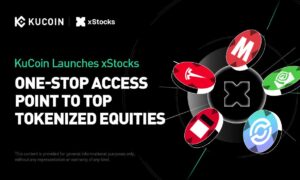Leverage Shares, a European pioneer in leveraged and single-stock exchange traded products (ETPs), has filed to launch 13 single-stock ETFs in the US, according to a recent regulatory filing.
TakeAway Points:
- In the US, Leverage Shares intends to introduce 13 single-stock exchange-traded funds (ETFs), comprising 2x long and inverse exposure to firms such as Apple, Nvidia, and Tesla.
- The US single-stock ETF market is valued at $7.4 billion, with Nvidia and Tesla dominating $5.3 billion of it.
- In contrast to Schwab’s policy, Fidelity’s new revenue-sharing plan may charge non-participating ETFs as much as $100 more.
Leverage Shares’ US Growth
The new ETFs will include seven 2x Long ETFs, which aim to double the daily return of companies such as Apple, AMD, ASML Holding, Boeing, Coinbase, Nvidia, and Tesla. Additionally, six ETFs will seek two times inverse exposure to companies like Arm Holdings, Meta, Microsoft, Nvidia, Taiwan Semiconductor Manufacturing Company, and Tesla.
The US single-stock ETF market, valued at $7.4 billion, is currently dominated by products tracking Nvidia and Tesla, which account for $5.3 billion of the market, according to Morningstar Direct. Leverage Shares’ new ETFs will be the first in the US to track Arm Holdings, ASML Holding, and Taiwan Semiconductor Manufacturing Company.
Leverage Shares launched its first ETP on the London Stock Exchange in 2017 and had $168 million across its European single-stock ETPs as of May 31, with $58 million in inflows over the past year. The firm aims to leverage its European experience to stand out in the competitive US market.
“It doesn’t surprise me that Leverage Shares would do this, given their success in Europe,” said Amrita Nandakumar, president of Vident Asset Management.
She noted that to differentiate themselves, Leverage Shares might focus on marketing and potentially lower fees.
Market Competition
The single-stock ETF market in the US is competitive, with 61 ETFs from issuers like AXS, Direxion, GraniteShares, Innovator ETFs, Kurv ETFs, and YieldMax pulling in $4.5 billion in net inflows over the past year. Despite this, analysts believe there is room for another entrant.
“These leveraged ETPs are similar to index funds in that all they have to compete on is price, tracking error, bid/ask spread, and then, to a lesser extent, there may be some brand affinity,” said Matt Apkarian, a research analyst at Cerulli Associates.
Leverage Shares has not disclosed the fees for its planned ETFs. Most single-stock ETFs charge just over 100 basis points, according to prospectuses. However, Morningstar senior analyst Ryan Jackson believes that fees may not significantly influence investor decisions, as these ETFs are primarily used by day traders who are “fee agnostic.”
Apkarian added that Leverage shares might attract attention by offering higher leverage products on non-US exchanges, where they already provide four- and five-time leverage. However, he cautioned that established US products benefit from tighter bid/ask spreads due to higher volume, making it challenging for new entrants to attract traders unless they offer better tracking errors or lower fees.
Fidelity’s Revenue-sharing Deal
Fidelity Investments is pushing ahead with securing revenue-sharing deals, allowing it to collect up to 15% of exchange traded fund revenues. The brokerage has reached agreements with “dozens” of ETF issuers and is negotiating with many others. If issuers do not sign up, investors could face a surcharge of up to $100 when buying their ETFs.
This move comes as Fidelity aims to offset the costs of providing free trading to retail investors.
“The decision to harmonise some of our fee policies comes as our level of support and service for ETFs across the industry is growing rapidly,” a Fidelity spokesperson said.
In contrast, Charles Schwab, another major US retail brokerage, is not pursuing such a broad revenue-sharing program. Schwab president Rick Wurster acknowledged the substantial costs of running a large brokerage and said the firm is monitoring Fidelity’s efforts.
Revenue-sharing payments for marketing services and data agreements are not new. Schwab collects such payments for certain active “semi-transparent” ETFs, though these represent a small fraction of the market.
Fidelity’s broader program could reverse the trend of lowering charges for investors, which began in 2019 when both Fidelity and Schwab cut their online ETF buying commissions to zero.
Vanguard, ranked second in the US ETF market, does not participate in revenue-sharing deals. This reluctance is part of the reason Schwab has not followed Fidelity’s lead.
“We’re in business to serve advisers, and we know Vanguard is one of the firms they like,” Wurster said.



































